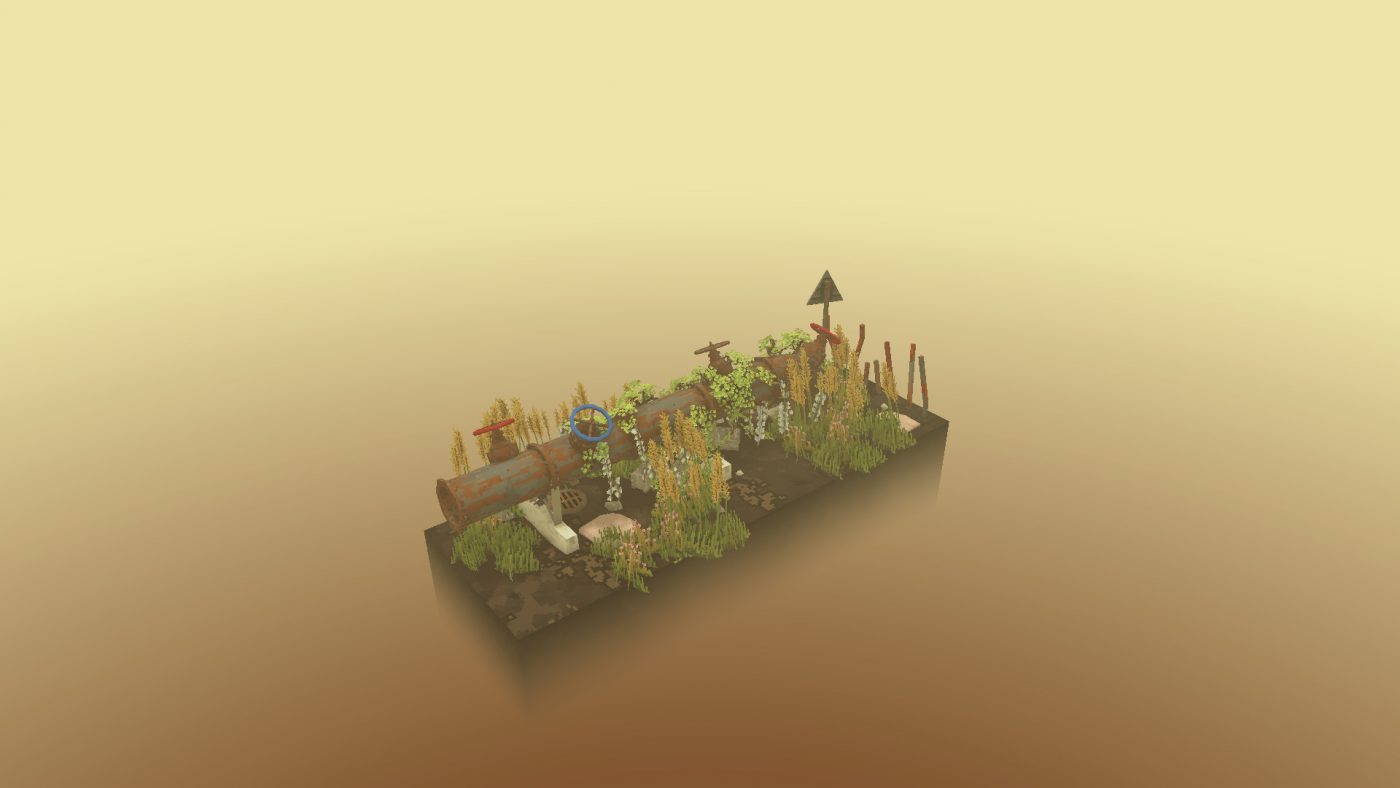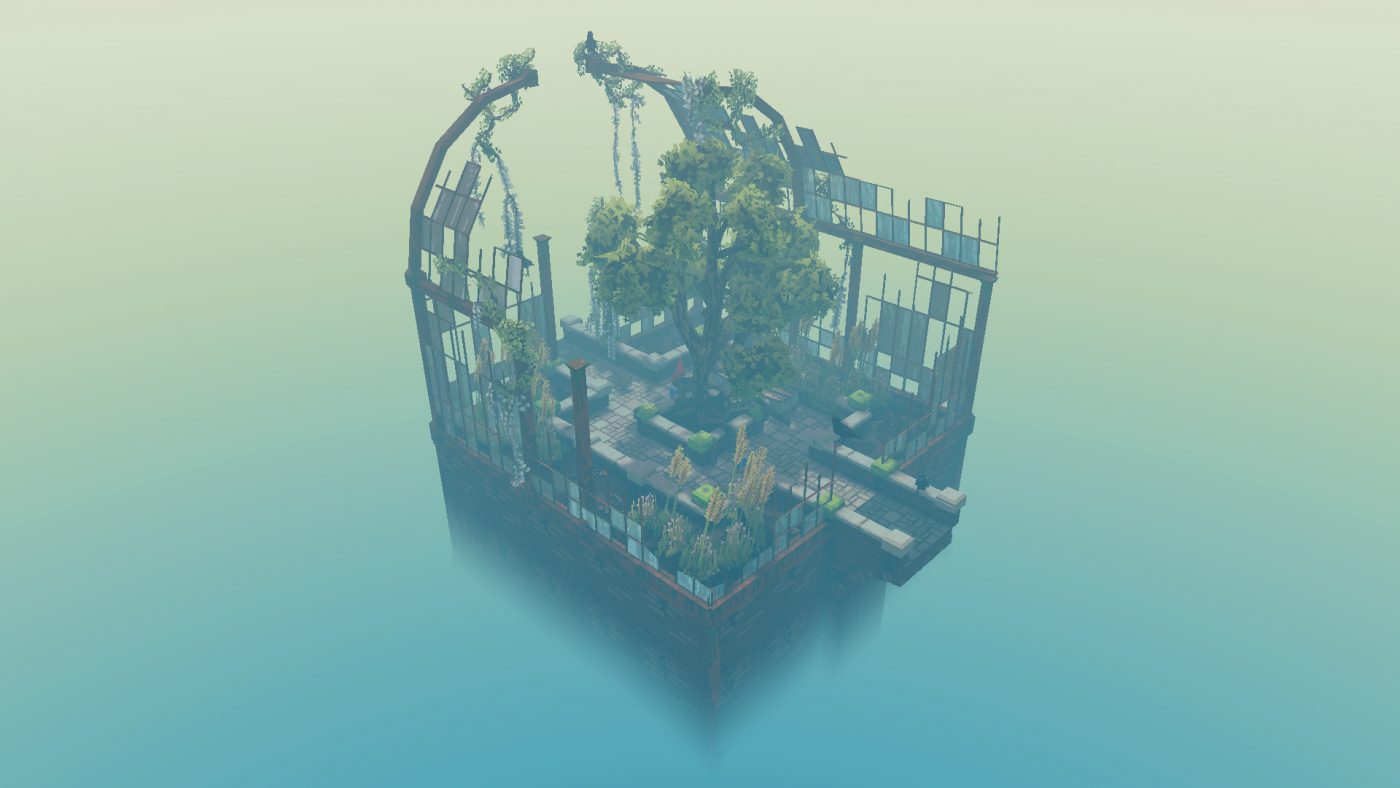Cloud Gardens, developed and published by Noio, advertises itself as a chill game about using plants to overgrow abandoned wasteland dioramas.
Cloud Gardens is split into two modes – puzzle and sandbox. Sandbox is a bit self-explanatory. You place objects on and around a square, and select plants to grow around them, creating a piece of 3D art that looks like a piece of recaptured urbanism. However, not everything is available from the offset to create your masterpiece. You unlock your tools in the puzzle mode.
In the puzzle mode, which they call scenes, you are presented with a premade area, full of junk, but no plant life. Bringing the plant life is your job. You can place both orbs of plant life – let’s call them seeds – of different types of plants, such as cacti, and what looks like a cabbage that springs forth lush foliage, and you also place junk. But why am I placing junk, I hear you ask? In a place so full of junk already? Well, that’s where the fun lies.

When you place a seed, it doesn’t just keep growing like in Sandbox mode. It grows relative to the trash around it. And to encourage the plant to grow more, you place more junk around. Discarded car wheels, road signs, traffic cones, whole cars. The discarded items of humanity come in many shapes and sizes. And as long as you don’t place them in the exact same spot you placed a seed, but close enough to the plant’s radius, your junk helps the plants grow. You get more seeds by encouraging the plants to grow until they flower. You can then collect these flowers, which pool together to create more seeds. You keep going until you’ve reached the level’s desired amount of growth.
Each level presents new challenges – new items to place, new plants to grow. And, as mentioned, each level completed unlocks more items to use in the Sandbox mode, allowing you to create your post-apocalyptic landscapes. The scenes are split between Highways, The Junkyard, Rooftops, with at the time of writing a preview of Greenhouse, and Heavy Industry and Train stations soon to come.
For me, the puzzle mode was the most fun. I love the endorphins released from completing levels and unlocking more items and plants. Figuring out how best to place the plants and junk to grow the biggest and best plants. There is no time limit, you can get stuck as you run out of trash and have no plants to grow, but it just resets with no penalty, and you learn from your mistake on how best to place the items for the most growth.

The sandbox is fun, this is true, but it’s more for taking beautiful screenshots and show creativity in how you can place things. When it comes to a game, I find the puzzle solving aspect a lot more appealing and entertaining, but the sandbox certainly has it’s appeal for those who wish to create their own greenpocalypse environments.
I enjoy the idea that the plants grow stronger from the more there is around for it to overtake. Nature retaking its environment in opposition to the clutter. If only it happened like that in real life. But while exploring Cloud Gardens, you can pretend, as you see plants retake the cube of earth you are given.
The game is a very relaxed experience. The music is soft, the sound design pleasing, with crows coming to visit your creations as you play. If you find one puzzle too confusing, or frustrating, you can skip a level and come back to it, playing onward. To exemplify the simplicity of the gameplay, you have 3 settings. Sound. Music. Full Screen. And that simplicity is Cloud Gardens’ strength. It’s not complicated. It’s just a game about planting in the urban wilderness. No watering schedule or the plants die. They just grow. And you’ll find yourself sinking hours into this wonderful little world.

